Nonfiction. Just the thought of reading and retelling it makes some kids’ brains feel like they’ve turned to mush! But MUSH may just save them with this fun Nonfiction Retelling Chart!
A couple of years ago, I created a SCOOP fiction retelling chart for stories. It’s been such a popular one for readers.
I’ve had several requests for a nonfiction chart for retelling. Well, I’ve just created an entire Nonfiction Pack, based on MUSH, and I’m sharing a freebie from it today!
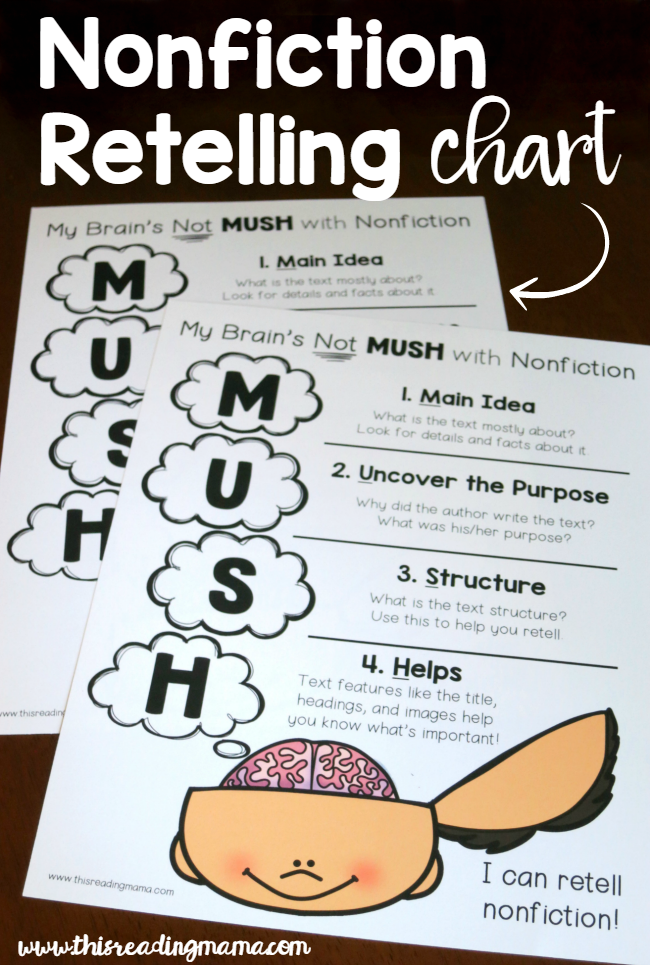
*This post contains affiliate links.
**The free download can be found at the END of this post. Look for and click on the teal download button.
FREE Nonfiction Retelling Chart – MUSH
No doubt about it, nonfiction retelling is very different than fiction retelling. Fiction retelling is based more around characters and a story line. Many kids can tell or retell a story, even at a very young age because the structure is so familiar.
Nonfiction text centers around facts, generally not characters and a story line. Throw in text features and text structures and you may find you are teaching readers who really feel like their brain is mush!
So, I developed MUSH to help kids comprehend and retell nonfiction a little easier.
You can grab the freebie {in color & blackline} by clicking the teal download button towards the bottom of this post.
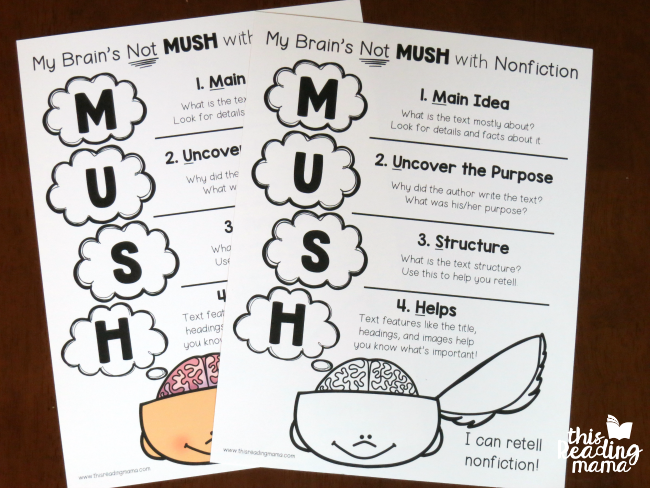
MUSH stands for:
M– Main Idea
U– Uncover the Purpose
S– Structure
H– Helps (Text Features)
Let’s break it down a little further, shall we?
Main Idea
The way I explain main idea to young readers is: What is the text mostly about?
Most nonfiction texts or articles are written with a main idea and supporting details. This main idea is often supported throughout the text in the title, headings/subheadings, images, graphs, or other text features.
I do like readers to be more specific with the main idea if the text lends itself to it.
For example, if I have a learner who is reading The Moon Book by Gail Gibbons, the main idea may just be “It’s all about the moon.” But if he’s reading The Moon Seems to Change, the main idea wouldn’t just be about “the moon.” It would be more specific about the phases of the moon.
Uncover the Purpose
The author’s purpose affects how he/she writes. It affects how she organizes the information, the text features she includes, and the main idea.
The author’s purpose also affects how we read it. You don’t read a recipe the same way you read a news article.
For the most part, nonfiction text has three main author purposes:
1. To Teach/Inform – you are given facts or info about a topic
2. To Explain – to explain how to do something
3. To Persuade – to change your opinion or get you to try something new
{A page is dedicated to author’s purpose in my nonfiction pack.}
Structure {Text Structure}
I could talk for days and days about text structure. It’s a topic that learners can explore a little in Kindergarten and 1st grades. But as they get older, they need to dive into these in more depth.
Having a basic grasp on text structures helps learners organize and structure their retelling. Simply put, the text structure of a text affects how you retell it.
You don’t talk about an biography the same way you talk about the latest article on fidget spinners. Often, a biography needs to be retold in a specific order for it to make sense while an article may not.
Feel free to download my free nonfiction text structures chart!
Helps {Text Features}
Text features are things the title, subheadings, images, graphs, and much more.
The text features {or helps} within a text can help readers know what’s important to include in a retelling. This is because authors often use features to really make a point about their topic.
You can download my free nonfiction text features chart.
Understanding the basics of MUSH is vital before learners can be expected to really use it for their retellings. So take your time in teaching each of these components to learners.
If you teach in the younger grades (K-2), keep the information developmentally appropriate and simple to understand.
If you teach in grades 3-5, you can dive a bit deeper. The book that helped me do this as a reading tutor with 3rd-5th grades was Emily Kissner’s book Summarizing, Paraphrasing, and Retelling.
Grab the entire pack {or scroll down for the freebie}
Enjoy!
~Becky

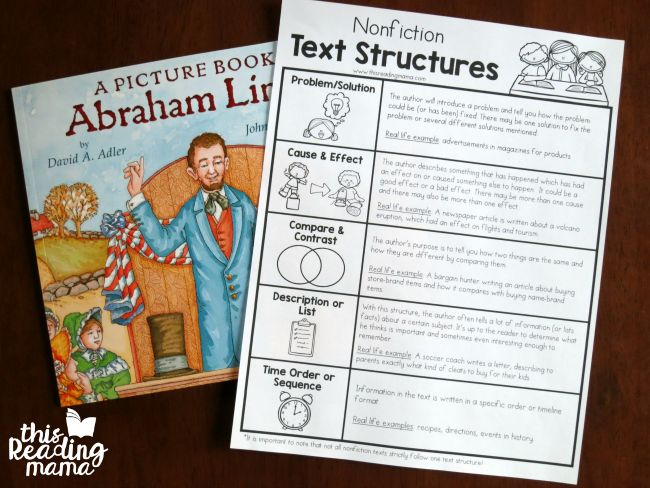
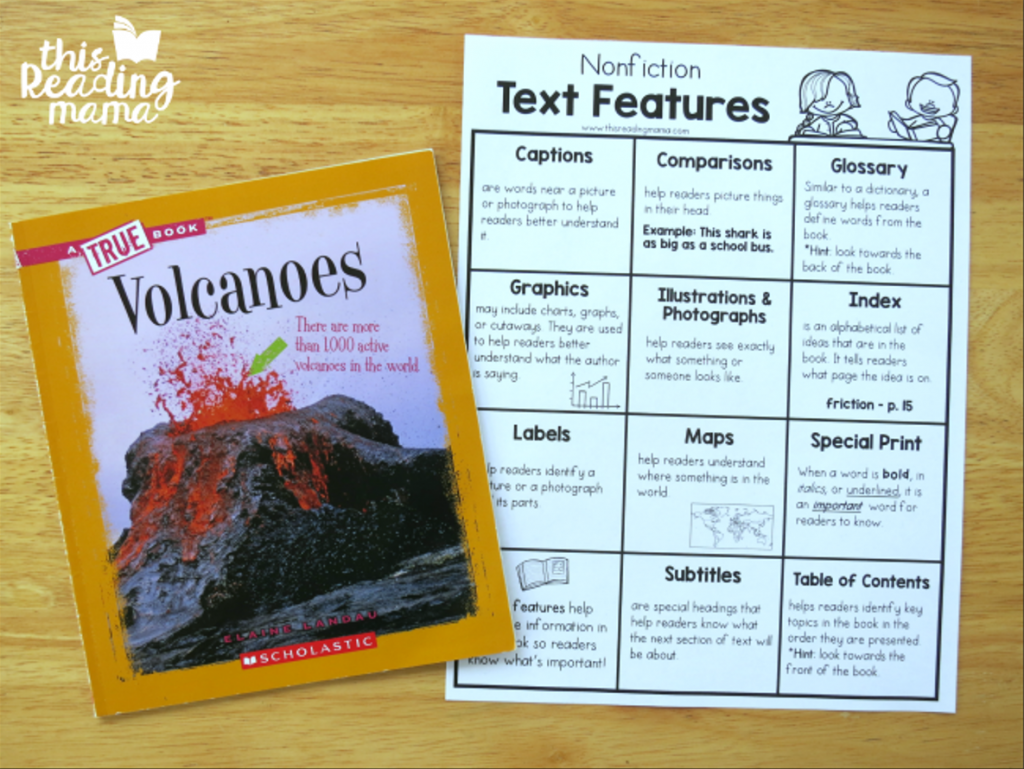
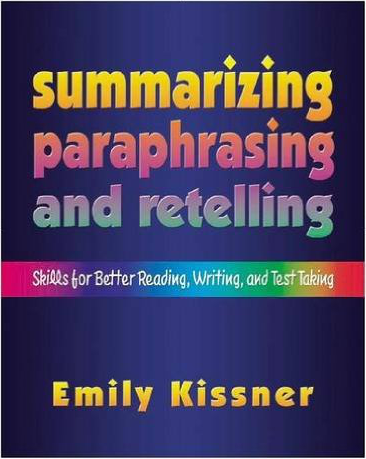


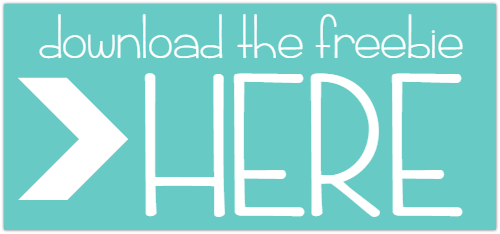
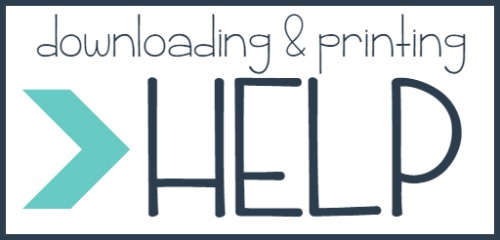
Leave a Reply